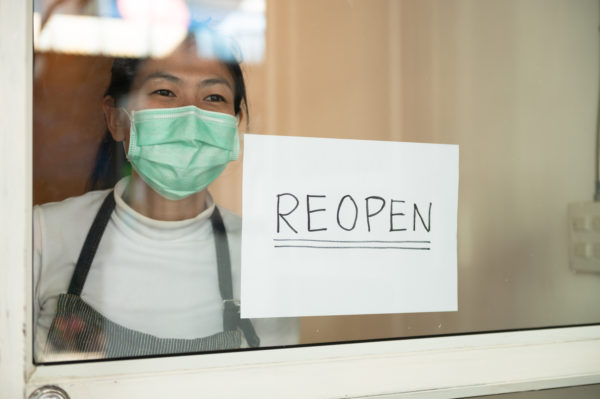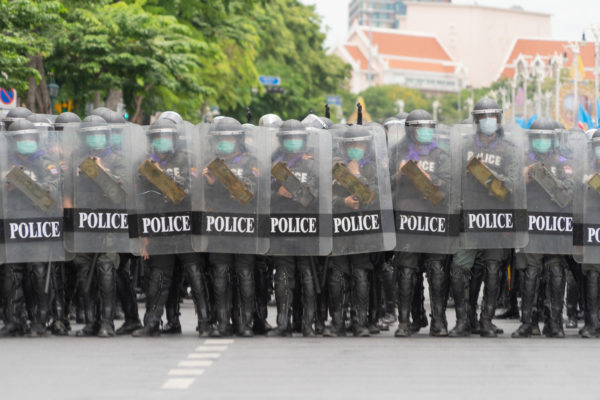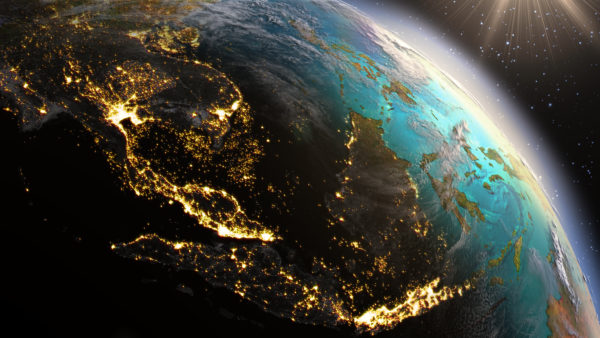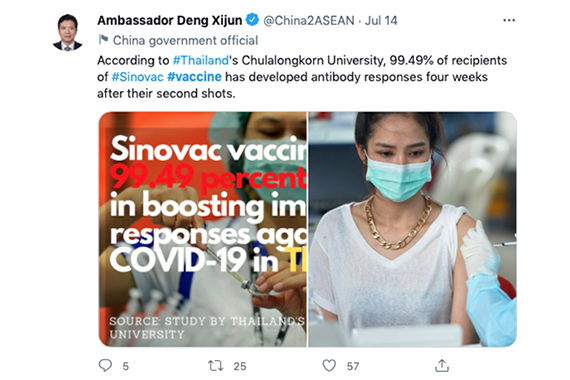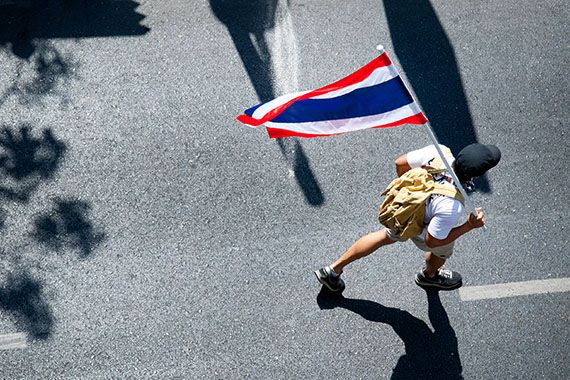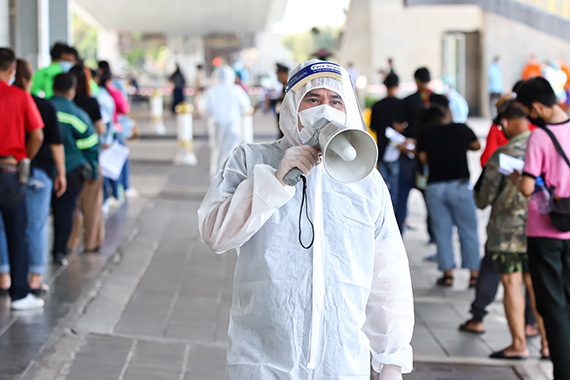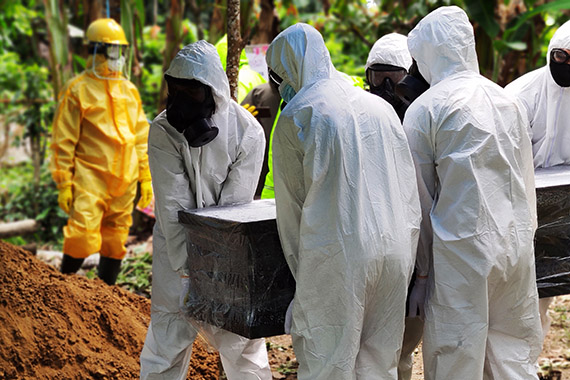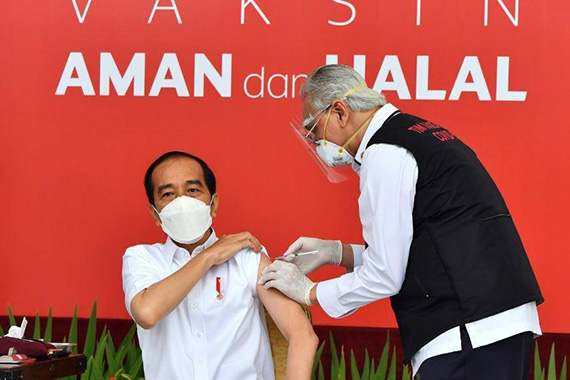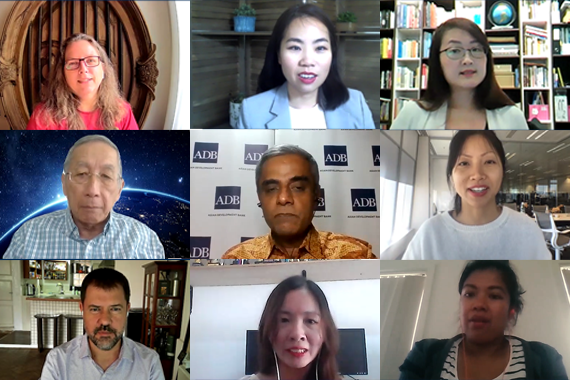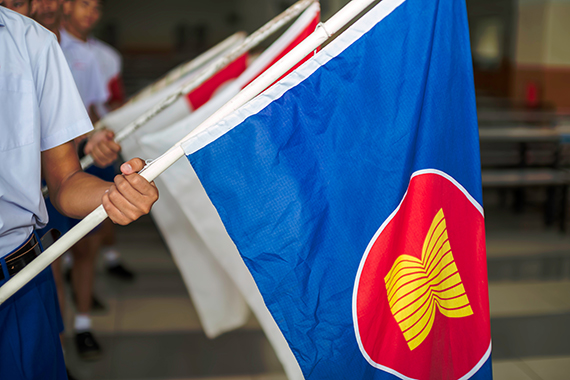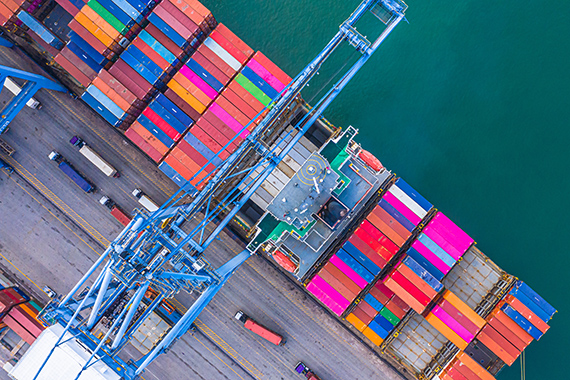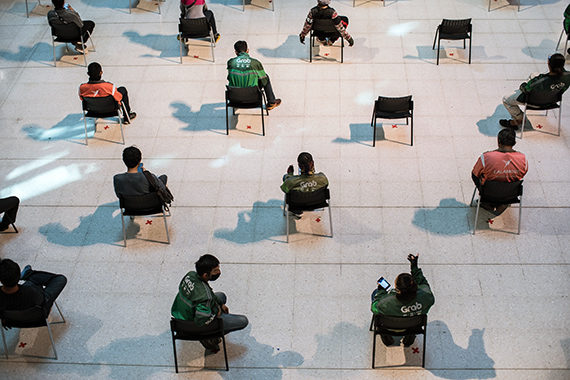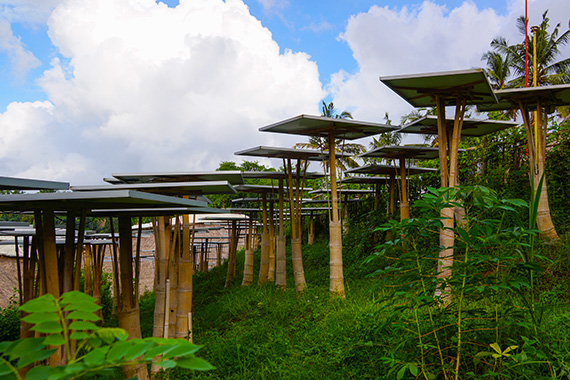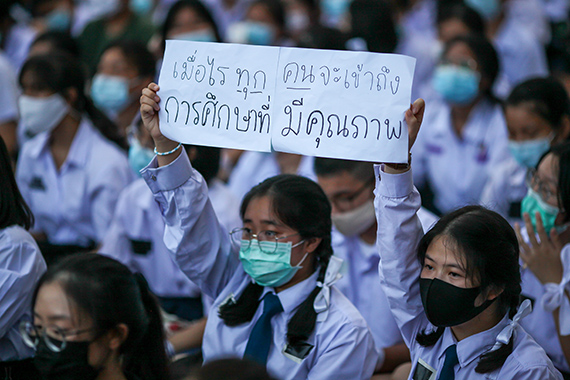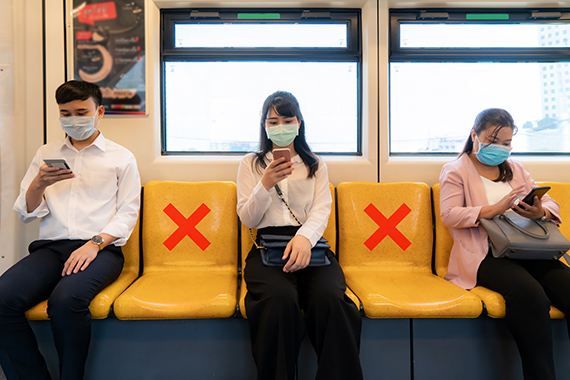The COVID-19 Pandemic and Geopolitics in Southeast Asia
By Dr Huong Le Thu
Published on 27th January 2021
Read in 14 minutes
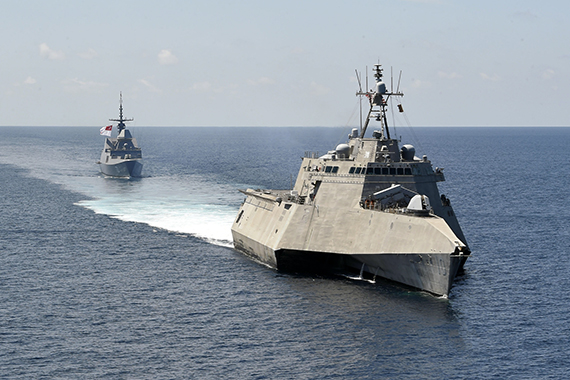
South China Sea exercises between the U.S. and Singapore – US Navy – Flickr
There is no good time for a pandemic, but the world arguably has been less prepared than ever for this one. Not because we haven’t experienced plagues before, or that we didn’t imagine a pandemic like this one, but because we preferred to think about the threat in abstract rather than inevitable terms.
The COVID-19 pandemic hit the world at a time of vulnerability. Global order has been challenged. The political health of many countries is under stress, and the social fabric of many communities strained.
The international system is being disrupted by renewed great power competition that seemingly is between two giants — the United States and China — but affects the rest of the world.
And while a global phenomenon such as COVID-19 requires international cooperation, including between competing nations, the pandemic has in fact turned out to be another vector of competition.
The coronavirus crisis has become a measurement by which political systems are judged – which systems deal with it better, who can secure medical services and supplies, who is going to win in the vaccine race, and even who can influence global health institutions.
Meanwhile, the smaller and mid-size countries suffer both from the effects of the coronavirus and the challenge of navigating between the opposite “camps”.
Few regions would be as keenly aware of that competition as Southeast Asia. Having survived it before, the region now finds itself once becoming the epicentre of geopolitical rivalry.
So how will COVID-19, and responses to it, alter the geopolitical landscape and calculations of this diverse region? The pandemic has tested all governments on a multiplicity of issues, in some cases even challenging their survival. This essay offers three recommendations, for both individual Southeast Asian countries and the region as a whole, to minimize the costs of the pandemic.
Skip to section:
Misjudging the impact of Covid-19 could be fatal The Order is shifting. Right now Learn to multi-task well Conclusion Interview About the AuthorMisjudging the impact of Covid-19 could be fatal
Many have labelled the COVID-19 pandemic as an “accelerator” of pre-existing trends rather than a game-changer. But that is a gross under-estimation of its impact.
It is true that COVID-19 has accelerated already well-entrenched trends in Southeast Asia, from domestic authoritarian tendencies, to growing skepticism towards the United States, to a weakened role for global institutions amidst tumultuous global crisis.
But the pandemic has not accelerated all trends, and definitely not at the same speed. In fact, it has slowed some down (like progress in reaching the United Nations Sustainable Development Goals) and created unexpected change in others (arguably preventing Donald Trump from winning re-election, for example). Moreover, the pandemic has the potential to undo some of the work of the Association of Southeast Asian Nations (ASEAN) to strengthen regionalism.
COVID-19 is therefore much more than just an accelerator. It is a true disruptor, with cross-cutting and long-term consequences. The pandemic introduces profound change on many levels – and that’s what is dangerous about it.
In less than a year, the pandemic has sent the global economy into the first simultaneous recession since the 1930s. It has, arguably, already altered the course of globalisation and the long-term movement of people, talents and services, and even goods. Travel restrictions are a prime example, and they may not be reversed any time soon.
Changes to global supply chains may have already been underway to some degree because of the U.S.-China trade war, but the push to diversify production is being further propelled by the pandemic. Resource nationalism and vaccine nationalism will affect not only the physical recovery of Southeast Asia, and the world, but will also likely determine in part the future alignment of regional politics.
Misjudging the pandemic could be fatal. Indonesia for example, underestimated the severity of the problem at the outset and delayed its responses. A misplaced denial resulted in it paying severely now – with nearly one million cumulative cases by one account, high numbers of new infections, and more than 27,000 deaths (as of 25 January 2021) – and will likely result in it paying even longer-term economic and social costs. From a trajectory of economic growth that would bring it closer to the league of the world’s largest economies, Indonesia for the first time in two decades fell into a recession in 2020.
The ‘COVID-poor’ – a group pushed into poverty as a result of the pandemic and its economic effects, especially in tourism-reliant regions like Bali – are growing. Indonesia will bounce back eventually, but the prognostics for the next few years are grim.
If Indonesia loses momentum for too long, it will have to curb some of its ambitions, including those regarding its regional role. Each country’s economic strength, confidence and power will be affected in the post-COVID world, which in turn, may shift the hierarchy and balance in Southeast Asia.
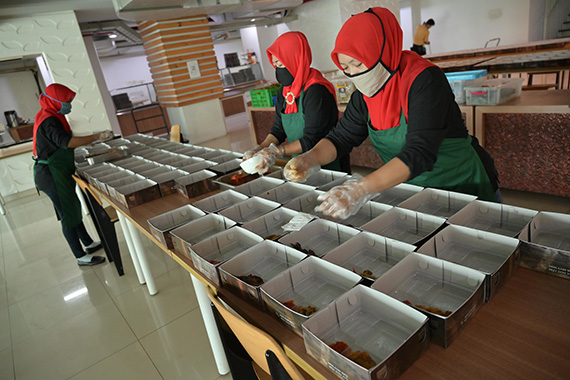
Food preparation in a pandemic, Indonesia – ILO/F. Lateif – Flickr
In summary, Southeast Asian nations must not misjudge just how significant this juncture is. If they do, they are likely to respond inadequately to the challenges and may miss the opportunity to assert their position and agency in this critical time.
The 2020 Lowy Power Index shows shifts in power rankings that correlate with pandemic responses. For example, the United States recorded the sharpest decline as it struggles with the outbreak, while the greatest advance of this year was recorded in Vietnam, which has dealt with the pandemic very efficiently. While the Lowy Index is just one of many attempts to measure power relativity, it is a useful demonstration of an apparent trend – that a transformation of global order is happening now, amidst the pandemic.
The Order is shifting. Right now
The pandemic has frozen a great deal of international travel and movement. But geopolitics has not been frozen. Quite the contrary.
Australia’s Prime Minister, Scott Morrison, recently recognised the tectonic shifts in global order when he said: “We’re amidst the most consequential strategic re-alignment since the Second World War”.
Australia may feel this more keenly than its Southeast Asian neighbours, who are relatively less dependent – or so perceived – on the United States as a security guarantor and on China’s market.
For Australia, a sharp deterioration in relations with China has already resulted in dramatic economic costs, and an increasingly inward-looking United States is less reassuring. No wonder Canberra feels more vulnerable than ever.
For most Southeast Asian states, that sense of geopolitical gravity is less prevalent. But that doesn’t mean the current geopolitical shifts will affect Southeast Asia in a lesser way. That would be a dangerous assumption for the region to make.
Southeast Asian alignment politics and security relationships are already shifting. The question is, just how conscious is the process? If Southeast Asian countries really believe they do not need ever to “choose”, then they may be giving up their power of conscious decision-making.
In fact, despite the predominant narrative about non-alignment, some have made their choices a long time ago. Thailand and the Philippines are treaty allies with the United States – whether they stick to this or not is another matter. Non-alignment is an option, provided that it is truly a conscious national strategy. But rhetoric alone is not a strategy.
Declining to make any choices – or failing to act – has consequences.
The real choice for Southeast Asia is between being proactive at a time of change, and making conscious decisions that advance national interests, or passively trying to wait out strategic change. If Southeast Asian nations choose the latter course, they will miss the optimal window within which to exercise their own agency.
With the exceptions of Vietnam and Singapore, who have dealt with the pandemic relatively effectively and retain stable leadership, most of the region is preoccupied with fighting COVID-19 and with domestic political challenges. It might be that there is not enough strategic bandwidth in these countries to take on big, geopolitical and region-wide issues.
But countries in Southeast Asia, to varying degrees, show a level of conviction that they’ve lived with the China threat for a long time and are able to muddle through, or even turn the threat to opportunity.
Indonesian strategic thinkers emphasise a preference for a peaceful region of cooperation rather than competition, where they can focus on economic development. That’s an ideal goal for most Southeast Asian countries, which are mostly still developing. But that denies a fast-changing reality. China’s increasing power, control and status-driven foreign policy stand in juxtaposition with such preferences for peaceful development. China’s increased control over the South China Sea and its natural resources is evidence of that.
Southeast Asian diplomatic elites tended to blame the United States under the Trump Administration and its unsophisticated diplomatic narratives for increasing major power tension and ‘making them choose’. But that misdiagnoses the core of the problem and, if not addressed, will lead regional responses astray. Trump’s China policy may have struck an uncomfortable note among some Southeast Asians who prefer a quieter way of dealing with the challenges, but the “ASEAN Way” of informal consultation behind closed doors has its limits.
Some in the region seem to be content with “cruising along” and applying the same strategy they’ve had towards the great powers for some time. At times of great uncertainty, countries understandably seek to avoid risk through continuity. But the great powers have changed a great deal and what may have worked before is unlikely to work now.
Both China and the United States will emerge from the pandemic as different actors with different priorities. Traditionally, Southeast Asia’s way to manage China’s challenge was to enmesh it, socialise it and include and involve it in regional processes. Since the 1990s, ASEAN has sought to mitigate the China threat by enmeshing it into ASEAN dialogues and regional architecture.
This offered in return a value for China – then diplomatically isolated and economically weak. But this strategy now has limited value. China today is vastly different from the one that was “hiding and biding” and following a “good neighbor” policy. Not only has China changed since Xi Jinping’s ascent to power, but Beijing has also adopted a much more aggressive posture during and throughout the pandemic.
This is a fact, even though many in Southeast Asia often tend to downplay Chinese assertiveness publicly. And while the strategic cultures in Southeast Asia tend to avoid confrontation, even when matters are severe, China is more interested in advancing its own goals than responding in kind. Southeast Asia may appear to be preserving a peaceful environment, but this is coming at the cost of Southeast Asian agency.
Perhaps the biggest strategic contribution of COVID-19 is the lesson that when it comes to crisis, there is no external protector, not in the form of the United States or China, nor anyone else.
The region can no longer take a post-Cold War peace dividend for granted. Each and every Southeast Asian country needs to play its part in ensuring the evolving environment is most conducive for them to grow. Failing to recognize that, and missing the opportunity for strategic proactiveness, would mean reducing the avenues to exercise their own agency and sovereign rights.
Learn to multi-task well
Policymakers can deal with big challenges and even crises, but it is difficult for them to deal with many big challenges and many crises at the same time. This is where it can become dangerous.
In a war, winning or losing battles depends on the ability to plan and execute that plan, as well as some luck. When matters are disturbed, and attention is absorbed, things can be left to go their own way, on a course that could have been corrected if addressed earlier.
While the pandemic may not have accelerated all pre-existing trends, it has drawn our attention away from many challenges. Our capacity to control and ability to respond have thus been reduced. For example, the argument that the pandemic accelerated the authoritarian tendencies in some countries may be partially true, but it misses a more fundamental problem – authoritarian tendencies have been present and will remain present in Southeast Asia.
What is missing is an effective enforcement mechanism, one that previously kept those tendencies at bay. And perhaps the bigger issue here is the quality and standard of governance in the region – issues that will continue to pose challenges even when we recover from the pandemic.
Similarly, while the COVID-19 crisis has occupied everyone on this planet, our attention, resources and a sense of emergency have been taken away, at least for a while, from the issue of climate change. The climate crisis, however, waits for no one. And Southeast Asia is one of the most vulnerable regions to the effect of climate change.
Climate change will have economic, political and social repercussions. The region faces hazards, including flooding, drought and other natural disasters, like severe typhoons. In a recent McKinsey report, almost all ASEAN states are listed as frontier countries. By 2050, in an average year, anywhere between 8 per cent and 13 per cent of GDP could be at risk in those countries due to rising heat and humidity.
The risk of extreme rainfall could increase three or four-fold by 2050 in Indonesia. While flooding is a common occurrence in Vietnam’s Ho Chi Minh City, infrastructure damage could amount to between $US500 million and $US1 billion by 2050, with knock-on costs ranging between $US1.5 billion and $US8.5 billion.
While chairing the 2020 ASEAN-centric summits, Vietnam was between two major typhoons that also claimed lives in the Philippines. When paired with the pandemic wreckage, more national disasters will slow the path to recovery, even for those countries that can contain the virus. It is likely that in the immediate post COVID-19 period, there will be a tendency to allocate resources towards economic recovery rather than climate crisis as it may be considered as a less-urgent issue. Again, this could be another major miscalculation with lasting consequences.
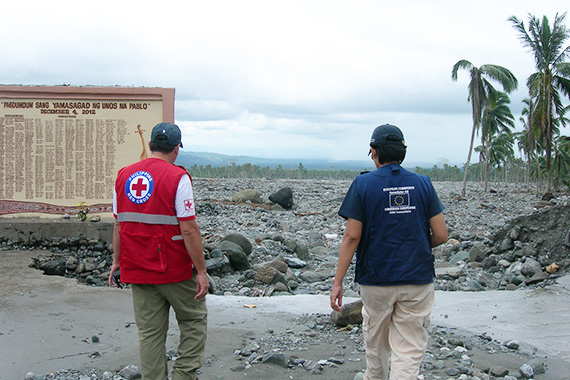
Philippines typhoon aftermath- EU/ECHO – Flickr
On the military side, the pandemic, like any panic diversion, has created favourable conditions for opportunists to significantly advance their positions. Many have warned against China’s aggressive and swift movements in the South China Sea, Taiwan Strait, East China Sea and even on the Indian border. These disputes have existed for decades and Beijing’s intentions were revealed before the pandemic, but since early 2020 China has intensified activities to progress its goals.
More importantly, despite a number of important developments, including the United States moving to align its position on the South China Sea more closely with the 2016 South China Sea arbitral ruling, and a wave of note verbale that both claimant and non-claimant states have issued to the United Nations rejecting China’s unlawful claims, most of Beijing’s military activities have become almost “normalised”.
China’s incursion into individual Southeast Asian countries’ Exclusive Economic Zones (EEZ), interference in their natural resource exploration, and harassment of fishermen is no longer an abnormality but an unpleasant practice that nations come to accept to different degrees, or at least hesitate to reject. Unfortunately, the “normalisation” of what is supposed to be unacceptable behaviour will only push the threshold of coercion further.
The Chinese People’s Liberation Army (PLA) has increased its deployments to the South China Sea during this time of global crisis, and the US has responded by sending more aircraft carriers too. This shows Beijing’s intention to signal control in the sea, but also reflects the development of China’s military capability. For example, a study shows that in recent months the PLA: conducted drills featuring new aircraft (Xian H-6J and Xian H-6G); deployed Su-30 fighter jets on a 10-hour armed patrol mission to Subi and Spartly Islands; launched a DF-26 anti-ship ballistic missile; simulated a war with the U.S. in the South China Sea and launched several ballistic missiles, including DF-26B and DF-21D missiles; and deployed the PLA’s newly revealed bomber, the H-6J, to Woody Island for the first time.
China’s aircraft carriers, Liaoning and Shandong, have also been deployed to conduct exercise over the summer. This has led many to worry about Beijing’s plans for an Air Defence Identification Zone (ADIZ) and a possible intention to assert not only naval but also air control.
Meanwhile, many Southeast Asian defence activities have slowed and a number of military exercises with international partners have been reduced and cancelled, including those between ASEAN members and external partners such as the United States and Australia.
Some Southeast Asian nations have also either downscaled or put their military procurement commitments under review.
For example, Thailand has withdrawn from acquiring land ships from China for estimated $US290 million, in order to purchase protective medical equipment and help support cash payments to citizens in need.
While these reductions are understandable, in the wake of increased tensions and militarization in the South China Sea, other Southeast Asians countries have also reduced military spending. Thailand and Indonesia have already announced cuts of more than $US500 million each, and Malaysia, the Philippines, and even Vietnam face similar pressure.
Meanwhile, China’s spending – colossal in comparison to Southeast Asian neighbours – further increased 6.6 per cent in 2020. The post-COVID-19 period is likely to further widen the capability gap between China and Southeast Asia, leaving the region more vulnerable to the threat of force and less able to defend its sovereignty.
There is not space here to cover in any detail other perennial challenges for Southeast Asia, such as cyber and information threats. Last year, Singapore and Myanmar conducted general elections amidst the pandemic. With physical restrictions, including those related to political rallies, and measures to limit crowds, conveying accurate online information and tackling misinformation became more important than ever.
The exercise of democratic rights has also been affected by the equality of access to information and infrastructure in this unprecedented time. Whether casting votes or not, access to information, and verification of it, safe internet, online classes, and the ability to transform economic activities through virtual connections will remain among the key challenges for the region.
In short, the challenges for Southeast Asia are piling up. There is no single threat that Southeast Asian countries must respond to. It is not China or cyber, climate change or economic recession, political turmoil or religious extremism; it is many challenges at the same time. Southeast Asian countries, like other countries, need to multitask to manage those challenges simultaneously. And they need to multi-task well, as the margin for error is now much slimmer.
Conclusion
We all want to believe that after the pandemic, and when the vaccines are widely available, the world order somehow will be back to ‘normal’. Some harbour hope that with Joe Biden in the White House, the United States will return to more predictable and responsible global leadership and somehow stabilise geopolitics. But nothing has frozen in this critical, fast-paced period, and certainly not the power balance in Southeast Asia. To think that we need deal with these matters only after the pandemic would be a fatal mistake.
If power corrupts, then crisis reveals. Indeed, this global, multi-layered crisis has revealed that the great powers cannot always be relied upon to provide quality public goods or demonstrate true global leadership.
Southeast Asia must come to terms with the fact that it can’t count on any single great power to help it with the many challenges the region faces. And while smart alignment politics are needed, it is individual proactiveness that will determine not only how the region can adapt to the emerging new order, but in fact participate in shaping it. Now is the time for Southeast Asia to exercise agency.
Interview
About the Author
Dr Huong Le Thu is a senior analyst at the Australian Strategic Policy Institute and the National Bureau of Asian Research (NBR) Asia Edge Fellow. At the Australian Strategic Policy Institute she leads projects on Southeast Asia, including regional alignment politics and perceptions of great power competition. Dr Le Thu’s career spans across academia and policy across Europe, Asia and Australia. She is an alumna of International Institute for Strategic Studies Shangri-La Dialogue Young Leaders Program and D.K. Inouye Asia-Pacific Centre for Security Studies.
